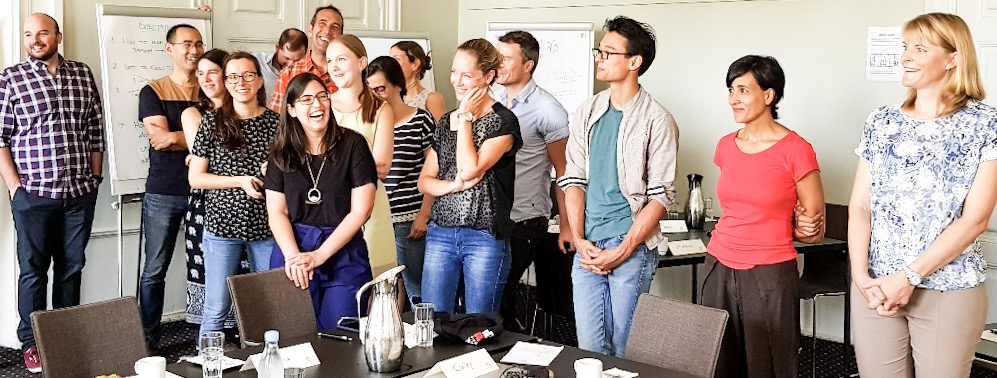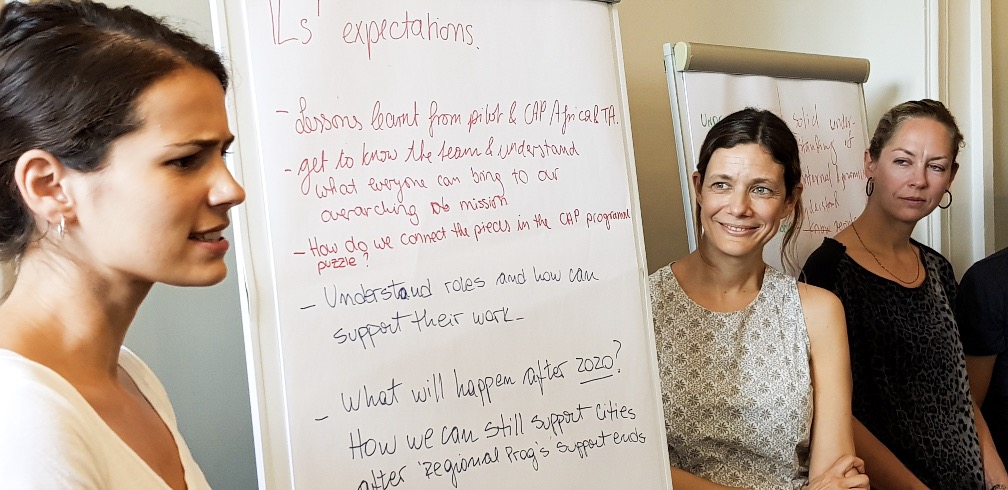Strategic Planning with Theory of Change
How do you improve your ability to help cities collaborate effectively, share knowledge and drive meaningful, measurable and sustainable actions on climate change?
C40 Cities is a network of the world’s megacities that is committed to addressing the issues arising from climate change.
They work in cities as varied as Lagos and Copenhagen or Shanghai and Chicago. Their Planning and Measurement Team has adopted Theory of Change (ToC) as a key steering instrument to underpin and improve the impact of their work. They recently met with StrategyHouse.dk at a retreat designed to help them learn about ToC, and to plan how they will use it to ensure they get the best out of it.
Purpose
How do you build a common approach to the problem, but tailor the interventions to regional differences? The purpose of C40’s Planning retreat with StrategyHouse.dk was to get a shared framework of understanding, to establish a cross-cultural and cross-regional exchange of experiences and viewpoints on change. The team wanted to produce a Theory of Change (ToC) that could be communicated with, shared between and strengthened by other C40 teams and stakeholders.
Challenges
When you are a truly global organisation, spread across continents and operating at both practice and policy levels (and everything possible in between), getting all the stakeholders involved is part of the challenge. The greatest value of Theory of Change is that it offers is a joint reflection process. Ideally this ensures that all the relevant actors, in a programme, have a part of defining how to achieve their desired outcome(s). C40 Cities opted to gather the core planning team together to work on this and then to disseminate the results of their work to the rest of the organisation, in a new phase.

Method and solutions
A first step was to decide at which level to develop the ToC. This required specification and reflection about what C40 Cities wanted want their ToC for. Will it be used for discussing how change happens? Is it for detailed planning? For C40 Cities, what they needed most was a programme and project-level theory change. This task included working in teams to identifying the key domains of change within the C40 Climate Action Programme, taking into account the contextual and regional differences from Cape Town to Vancouver. From there a more detailed task was undertaken – to brainstorm the main preconditions for change and to sketch out pathways where the flow of change was analysed and described.
Output
Although the main value for the C40 Cities team was the working together, in a participatory process, to develop the theory of change, a physical output was necessary in order to engage other teams in the organisation, who could not be part of the workshop. Together with StrategyHouse.dk, the team co-developed pathways and theory of change diagrams and narratives. These emerged as strong opportunities for further detailed planning and prioritising. All in all, there was not only hot air in Middelfart!
Want to know more?
Contact Morten Ronnenberg mrm@strategyhouse.dk
p.s. – The hard work pays off
Having a theory of change at programme level helps to identify the main axes of intervention, to understand the overall flow of required actions and it provides a strong basis for prioritisation. However, if you want to go all the way, you need to develop detailed theories of change (all the way down to theories of action) at the local level. This helps individual offices and team members assess where the generic assumptions are wrong, which calls for a different approach. Most often, when something goes wrong, the fault lies in the details and in our assumptions. Testing these, all the way down to what you plan to do tomorrow is hard work – but it pays off.




